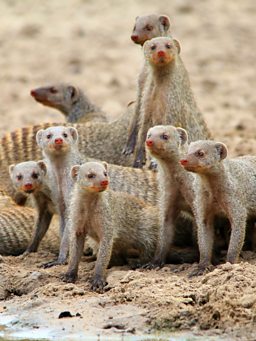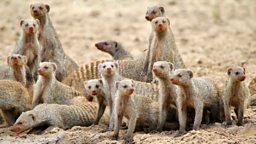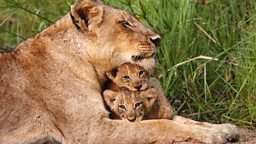Main content
Banded mongoose
- They live in colonies of between 5 and 40, sometimes more than 70.
- Dens are communal with a central sleeping area and sometimes several smaller chambers and up to 9 entrance holes. They scent mark their territories with their anal glands.
- Scent plays a huge part in mongoose life. If an individual is lost and can’t locate the group through scent, when the member returns the group will vigorously mark the lost individual.
- They can breed on average four times a year. Females all breed at the same time and mostly give birth on the same day, this level of synchrony is unique among mammals.
- Pups remain in the den until one month old then they will join the adults on foraging trips. Within the first month, offspring are guarded at the den by one or more babysitter (usually a male).
- Pups maybe transferred between dens 2-3 times during the first 3-4 weeks.
- A study by Dr Jenni Sanderson (University of Exeter) has found that there are huge energetic demands (paired with the fact that parents often go without food) on carrying pups which increases stress levels.
- The increase of hormone glucocorticoid inhibits the offspring care which affects the ability for these parents to care for the next offspring.
- Each female can have 1 to 8 pups per litter.
- Pups become independent of their escorts when they are 3 months old.
- The den is guarded by adult “babysitters”, usually males.





